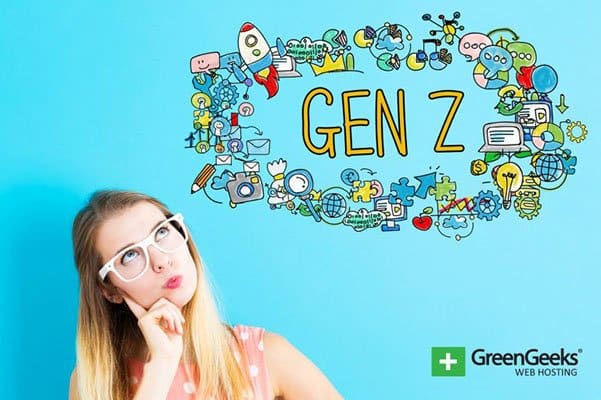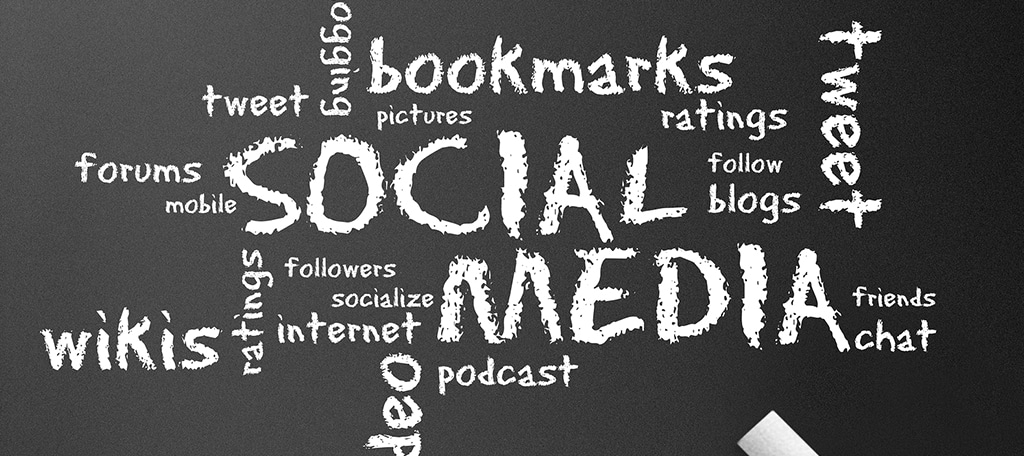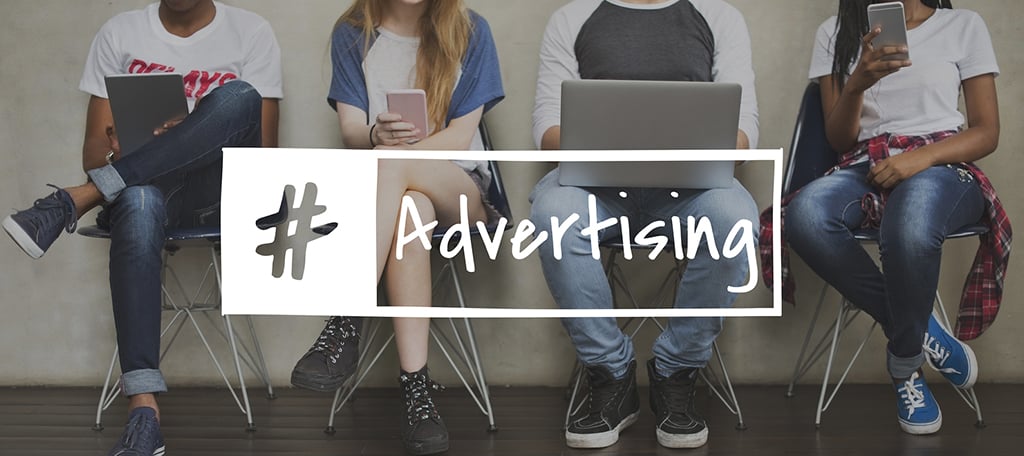
Just when you thought you mastered marketing to one generation, another appears to take up the reigns. Although focusing attention on marketing to millennials is still important, it’s probably time you start looking at marketing to Generation Z.
After all, it’s this generation who will start making a big impact in consumerism.
Generation Z are those who were born between 1996 and 2010. This puts them in the age range of 8-to-22. Although they are still relatively young, this generation is already making an impact in how businesses work.
So, what can you do build good Generation Z marketing strategies? Keep an eye on trends and behaviors.
Be Mindful of Mobile

Mobile marketing has been an important factor since the first smartphones started hitting the Internet. It’s a virtual necessity today that your website works perfectly from mobile devices. However, there is far more emphasis now, if you can believe that’s possible, with Generation Z.
About 96% of this generation owns a smartphone. It’s safe to assume this number is going to climb rapidly over the next few years. When the eight-year olds are capable of buying their own smartphones, this number is undoubtedly going to come close to 99% in a short amount of time.
According to Google, more than 50% of mobile Internet users will abandon a site if it takes longer than three seconds to load. Now, compound that with the fact that more Generation Z consumers will be tapping those sites as well. This translates to a lot of lost sales and leads if the site isn’t geared for mobility.
Dive Into Social Media

If you haven’t put a lot of effort into social media marketing yet, you’re going to miss out. Currently, more than 85% of Generation Z uses social sites like YouTube, Facebook and Twitter for everything from news to shopping recommendations. This means Gen Z surpasses the national average for social media users.
Unlike previous generations, who were eased into social sites, things like Facebook have always been a part of Generation Z characteristics. Essentially, they were born already adaptive to the Internet and what it can do. Luckily, you have access to many social media marketing tools to help engage the new generation of shoppers.
Like the saying goes, “Variety is the spice of life.” This statement is more true with Gen Z when it comes to social media. While many will still have favorite destinations, they tend to have accounts spread across many other platforms for various purposes.
This means you can’t just focus on two or three social hubs if you really want to connect with these young consumers.
Use More Video Marketing

It’s believed that video traffic will make up 80% of all consumer Internet use by 2019 around the world. There’s no doubt video marketing is an important part of building a brand. And Generation Z is going to drive it forward even further.
About 80% of Generation Z claims YouTube as the primary focus for online video with Facebook coming in at a very close second place. By including more video content to engage the younger audience, you can easily impact how this generation will see your business.
The trick is to create content that Generation Z will want to watch in the first place. For example, about 63% are more apt at trusting influencers over traditional ads. This is because the younger consumers view influencers as ordinary people.
Another reason to use influencers over creating your own content is connecting with an audience you may not have access to. Someone popular on YouTube may have a much wider audience than your own channel. This means you can reach out to people who may not even know your company exists.
On the other hand, there is something to be said about creating your own channel to engage an audience. It offers branding, legitimacy and greater promotional possibilities. And there’s nothing wrong with hiring an influencer as well as hosting your own YouTube or Facebook live stream.
Engage Generation Z Quickly

One of the more profound Gen Z characteristics is not with Internet usage. Studies show how Gen Z has an average attention span of eight seconds, which is four seconds shorter than you’d expect from millennials. This means you have a shorter amount of time to get their attention before they move on to something else.
You may want to put effort into being as succinct and direct as possible. There is less time for fluff or filler when it comes to Gen Z. A good way to think about it is considering if you can create a five-second ad perfect for YouTube. In reality, you can accomplish quite a bit in a short amount of time. And many brands do.
Today, there is a lot of competition for just about every product and service you can think of. Eight seconds could mean the difference between getting a sale or handing it off to someone else.
Go Beyond Traditional Ad Platforms

Elements like Google Adwords and other pay-per-click platforms experience a great deal of trouble when it comes to ad blocking software. Each time a person uses these applications, your ad isn’t displayed. While PPC and similar tools are still valuable in terms of generating revenue, you need to go beyond them if you really want to connect with Gen Z.
In reality, only 31% of Generation Z uses ad blocking software on desktops as opposed to Generation Y at 30%. However, this is still much higher than older generations who do not use ad blockers as naturally as the younger audience.
In other words, you need to be more creative and meet the younger consumers on their own terms. As nearly one-third of them won’t see a tradition ad from a computer system, that’s quite a few when you realize how many more of them there are compared to other generations.
Be More Socially Responsible

Social responsibility is a proverbial “feather in your cap” when it comes to Gen Z. They are more connected with social equality as well as environmental issues. To demonstrate your own prowess in these arenas proves to the younger audience you may be a brand worth trusting.
Trust is an important aspect of any brand, especially for Generation Z. Because they are aware of how easy it is to fake social engagement, they are often more paranoid than other generations. As a result, you need to provide a strong reason behind why these consumers should use your services.
It’s all about making a positive impact in the world. This generation is more self-directed and motivated to create change. And you need to follow suit if you want to impress them.
Engage the Entrepreneurs

About 72% of highschoolers want to start their own business in the United States. However, fewer students plan on going after a college degree when compared to millennials. This is because there is less emphasis on education than there was in the past.
Less than two-thirds of students are planning for college, which is less than the generation before. Between the high-cost of education and the fact we have access to nearly the sum of human knowledge on the Internet, I can see how fewer students are looking for college degrees.
The hardest part is coming up with a way to engage those entrepreneurial minds and associate your brand. Of course this highly depends on the type of business you operate or the products you provide.
Make them Part of Your Business

Loyalty is a good way to ensure future sales from consumers. It’s one of the driving forces behind brands like Apple and Microsoft. However, it’s not always the case when it comes to Gen Z. The new generation of consumers needs to be a part of the business platform.
As many as 44% of Generation Z would contribute to ideas for their favorite brands. You see this in some aspect when it comes to platforms like Snapchat and Instagram. It’s knowing their input is making a difference and seeing those changes happen that really connects with the younger audience.
Loyalty programs are less effective when it comes to Gen Z. They are too “on the fence,” so-to-speak. They relish more in high-quality than being offered discounts and savings. This means they are quicker to jump ship and buy from a new competitor if you’re not giving them what they want.
Interact With Gen Z

It’s not enough to simply toss-up a few social media posts or website surveys to really get the attention of Generation Z. You have to directly interact with them and demonstrate authenticity. For instance, don’t just use Snapchat as a way to show an ad. Integrate the audience and make them a part of the story.
One way a lot of YouTubers engage their audience is by directly asking a question and suggesting the viewer leaves a response in the comment section. Then, the YouTuber often addresses certain viewers and answers their questions during the next video.
Don’t think of this generation as consumers, but more of peers to be treated equally. You don’t want to just sell them something, you want to help them achieve certain goals. Directly interacting is a way to make that happen.
Focus Online Sales

Many businesses start with brick-and-mortar locations and then implement an online shop. For Generation Z, this is more important than ever. For the younger consumers, it’s mostly about what they can buy online as opposed to visiting a store in person.
Consider how 55% of Gen Z under the age of 19 would rather buy clothes online. Nearly the same number would also buy books and electronics from websites. By 2020, this generation will make up about 40% of consumers. The ability to sell online has never been more important than it is today.
Don’t get me wrong, some industries are seeing a revitalization in terms of walk-in customers. But with delivery services like Postmates and food distribution as with Blue Apron, Generation Z has less need to go shopping in person.
Provide Instant Gratification

Because of the era Generation Z is accustomed to, instant gratification is an important facet for their marketing. This goes along the lines of the “eight second” point I made earlier. Not only do you have to get their attention rapidly, but the end results need to be just as fast.
Take eCommerce, for example. A company that takes nearly a week to send a purchase is less desirable to one that can do it in three days. The quicker Generation Z gets their goods, the happier they are. Which then translates into a good experience worthy of being shared with friends and family.
I know not everything has the capacity for instant gratification. But speed and quality are going to be monumental in the coming years for virtually every industry. It’s why delivery services, on-demand streaming video, downloadable games and smartphone payment apps are so popular.
Gamify the Experience

Gamification is when you take an ordinary mundane task and turn it into some kind of game or entertainment. It’s a process that many businesses have implemented to increase productivity within employees. It’s also a way to engage the consumer.
For instance, many online games have what’s called “achievements.” If you’ve played the Xbox or use Steam, you already know what these are. It’s a reward system that is delivered when a player reaches a certain point in a game or performs a desired action. These are now part of many company profiles as part of gamifying the experience.
Twitch, a live streaming platform, implemented achievements by giving streamers rewards for accomplishments. To a similar degree, coffee shops and fast food restaurants also provide reward points and achievements while turning shopping into a game.
Gamifying is about making the experience fun while offering a way to reward customers. Find the right game for your brand, and it could go viral.
Don’t Wait too Long

It won’t be long until Generation Z is the major contributor to global sales. If you don’t make them a part of your marketing strategy today, you’ll seriously miss out when your competition is raking in the dough tomorrow. While some of today’s strategies may hold true for now, it’s only a matter of time before they are obsolete.
Keep your business relevant to the new target market.
